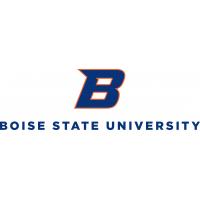Tree demography is foundational to ecology and conservation, from mass tree die-offs to forest recovery. Plot-level studies of tree demography, including field measurements of tagged individuals, have been fundamental for developing ecological theory and forest management strategies. However, the limited spatial extent of field plots impedes generalizing plot-level models for spatial predictions across heterogeneous landscapes. Novel high-spatial resolution remote sensing imagery has opened the possibility for measuring tree demographic rates with continuous spatial coverage at landscape to regional extents. Remote sensing derived measurements could address pressing research questions, including disentangling causes of high variation in natural regeneration across secondary forest landscapes. Despite the promise of high-spatial resolution imagery for ecology, applying these data to ecological questions will require novel modeling approaches that can account for large amounts of spatial data that often include hierarchical structure. In this thesis, I apply high-resolution remote sensing to upscale tree demography at landscape scales, and provide guidelines for ecologists seeking to parametrize spatially explicit models for neighbor interactions by combining field data, high-resolution remote sensing, and Bayesian quantitative methods. Chapter 1 demonstrates how high-spatial resolution remote sensing can help improve predictions of tree recruitment at the landscape scale. This chapter is the first step towards new support tools that inform restoration projects about where and which species will regenerate naturally in agricultural landscapes. Chapter 2 addresses how to optimize neighbor interaction models using the Hamiltonian Monte Carlo algorithm. I demonstrate how ragged matrices could solve data storage inefficiencies associated with the neighbor interaction models' pairwise structure. I also provide code for a model parametrization that solves a sampling pathology associated with high correlation in hierarchical structures and an overview of metrics to assess when this hierarchical structure pathology is present. Chapter 3 explores the influence of biophysical and anthropogenic drivers on tree mortality in agricultural landscapes using high-resolution remote sensing data. The results suggest that accessibility and land management are core factors that could be managed to prevent the mortality of agricultural trees. Educational initiatives and new policies that address anthropogenic factors could be the answer to reduce agricultural tree loss. Overall, this thesis brings together Bayesian statistical methods with novel high-resolution remote sensing to overcome the spatial limitation of field measurements and produce spatial predictions and inference on drivers of tree demography across heterogeneous landscapes.
Data and Resources
| Field | Value |
|---|---|
| Modified | 2022-07-07 |
| Release Date | 2022-07-07 |
| Publisher | |
| Identifier | a708224e-c085-4a13-b5d7-092672279bba |
| License | Adhere to third-party data sharing license |
| Public Access Level | Public |
| DOI | 10.18122/td.1871.boisestate |

